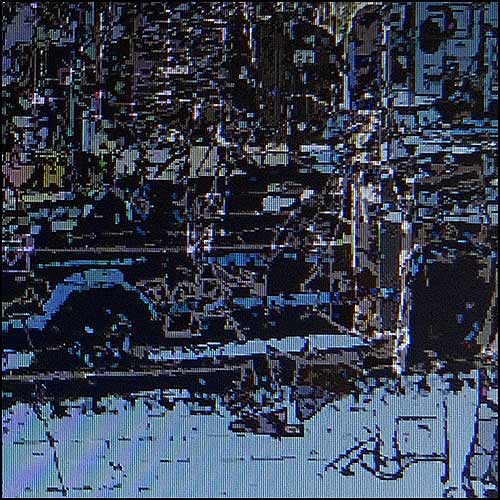
‘Broken one’ – 2010
“The freedom to play with photographic imagery should not be an issue. I am an artist first, not a journalist.”
You often refer to your close links with photography, even making an issue out of it. But these are not photographs. What are they?
These images are; not copied from photographs, not emulating photographs, not just making use of photo images in some way but direct traceable descendants of photographs. There is an unbroken link from my images to the information recorded in the digital camera. The only argument is the degree of the distance achieved from the raw data. And any argument about subjective boundaries imagined, along a continuous spectrum of change, soon become meaningless. The freedom to play with photographic imagery should not be an issue. I am an artist first, not a journalist. Every single one of these images was taken with a camera, and then manipulated.
They are no longer photographs then.
Why not? All photographs are taken with a camera, and then all are manipulated with chemicals or with in-camera software. Later they are manipulated in the darkroom or on computer. Dogging and burning in are as old as airbrushing negatives or hand tinting before the advent of colour. These are all legitimate manipulations. So are subsequent chemical alterations of the tone and colour, as in sepia. After all this manipulation a photograph is usually reinterpreted a second time when it is reproduced by a new media, offset printing or similar. All commercial photography is reproduced, touched up, polished and manipulated. At which point did it stop being a photograph and become something else?
I concede that some manipulation is OK as long as the image is still discernible.
Yes, but by whom? I can still discern it, don’t I count?
No. The artist is directly involved, an independent view is essential.
This point is a very interesting one, the last word in arbitration? There is no such thing of course and the search for some kind of definitive consensus is futile. A work will always be good, bad and indifferent at the same time and will always be too much of one thing to some and too little to others. But isn’t part of arts function to challenge, stretch and confound our conceptions? So what ever else, the work will always at least have this role.
The real question is how well is this task served? That is a far more legitimate way to judge the relevance of the images.
Pages: 1 2